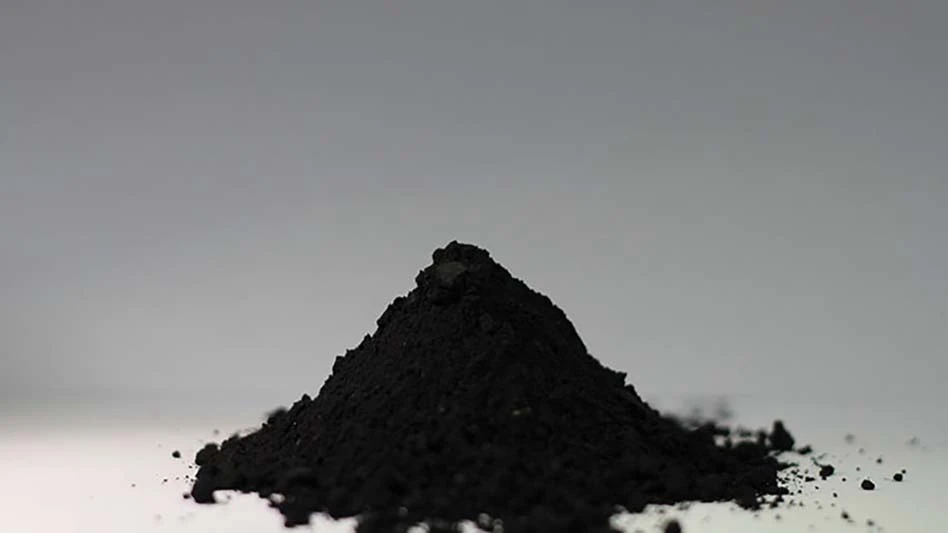
Photo courtesy of Befesa
Befesa, a leading Luxembourg-based provider of hazardous waste recycling services for the steel and aluminum industries, has reported its financial results for the first half of 2023, delivering total revenue of 615 million euros, or $676.24 million, and adjusted earnings before interest, taxes, depreciation and amortization (EBITDA) of 95 million euros, or $104.46 million in the first half of the year. The company’s revenue increased by 8 percent year over year to 615.5 million euros, or $676.8 million, compared with 572.5 million euros, or $629.5 million in the first half of 2022, which Befesa says is attributable largely to the contribution from its U.S. zinc refining operations. However, adjusted EBITDA for the first half of 2023 was 94.7 million euros, or $104.13 million, a 20 percent decline compared with the first half of 2022, which saw 118 million euros, or $129.75 million. Befesa says the decrease was driven by lower zinc London Metal Exchange, or LME, prices, as well as by the unfavorable increase in zinc treatment costs, which were 19 percent higher year on year). The persistently high coke price was more than offset by lower gas and electricity prices, the company adds.
RELATED: From dust to dollars
“We achieved a solid performance in H1, despite a very challenging macroeconomic environment,” says Javier Molina, executive chair of Befesa. “This demonstrates Befesa’s robust business model and supports our confidence in long-term growth. Our performance was affected by various temporary external factors, including unfavorable zinc and aluminum prices, zinc treatment charges and persistently high coke prices. We expect a stronger H2 based on a recovery in zinc prices, continued decreased coke prices and better volumes. We are committed to rigorously execute our growth projects, with a focus on refurbishing the Palmerton plant in the USA and our third plant in China, which will position us strongly for the years ahead.”
Befesa says throughput of electric arc furnace (EAF) steel dust declined by 6 percent year over year to 592,000 metric tonnes, with an average capacity utilization of around 71 percent. This reduction was primarily driven by U.S. operations and the earthquake in Turkey.
The recycled volumes of aluminum salt slags and SPL (spent pot lining) declined by 1 percent year over year to 171,000 metric tons, with an average capacity utilization of around 73 percent. Secondary aluminum alloys volumes saw a 3 percent increase year over year, reaching 87,000 metric tons, Befesa says, with an average capacity utilization of around 86 percent.
The company says zinc LME market prices decreased by 25 percent, or more than 880 euros ($968) per metric ton year over year to average 2,624 euros per metric ton, or $2,887 per metric ton, in the first half of 2023 but were partially offset by higher zinc hedging prices. Zinc treatment charges were set at $274 per metric ton for the full year 2023 compared with $230 per metric ton in 2022). Aluminum alloy market prices were down 12 percent year over year, averaging to average 2,243 euros, or $ 2,467, per metric ton.
With regard to energy prices, after reaching an all-time high in the first quarter of this year, Befesa says it coke price started to moderate in the second quarter, declining by 3 percent from the first quarter. However, the average coke price in the first half of this year remains roughly 25 percent higher than that of the first half of 2022 and around 90 percent above the average levels of 2019—2021. This negatively affected the company’s steel dust operations. Conversely, gas and electricity prices decreased further in the second quarter of this year to reach 2021 average levels, which had a positive impact on the aluminum salt slags operations.
Sustainable Global Growth Plan
Befesa says its Sustainable Global Growth Plan is progressing as planned. In the USA, the company says it continues the gradual improvement of the performance of its zinc refining operations in Rutherford County, North Carolina. The refurbishment of the plant in Palmerton, Pennsylvania, is on track, and it will continue during the rest of 2023 and 2024 to benefit from and support the incremental EAF steel dust volumes expected in the U.S. market over the coming years.
Befesa’s expansion in China continued to progress, with the start of operations at the second Chinese plant, which is in Henan. The two existing Chinese plants in Jiangsu and Henan are operating and will contribute to earnings in the second half of this year, the company says. Furthermore, Befesa says it is preparing its next EAF steel dust recycling plant—the third in China and 13th globally—in the province of Guangdong.
Outlook
Befesa says it expects a stronger overall second half of the year mainly based on the temporary nature of the external pressures, including an expected recovery in zinc prices, a reduction of coke pricing and improved volumes. Therefore, the company confirms its full-year guidance, with 2023 EBITDA expected at between 200 million euros and 230 million euros ($220 million and $253 million), or -7 percent to +7 percent year over year.
ESG
June 39, Befesa published its ESG Progress Report 2022, including progress on climate goals and EU Taxonomy alignment disclosures, as well as new topics such as the disclosure of Scope 3 emissions, production of green metals from 100 percent recycled material and Befesa’s contribution to biodiversity.
Latest from Recycling Today
- BIR calls for fair standards, circular solutions in defining ‘green steel’
- LME reports active Q2
- Liberty Steel assets facing financing deadlines
- Sims is part of Australian recycling loop
- Tariffs target steel exporters Brazil, Canada and South Korea
- Buy Scrap Software to showcase its software at Scrap Expo in September
- LG details recycling activities
- Algoma EAF is up and running







